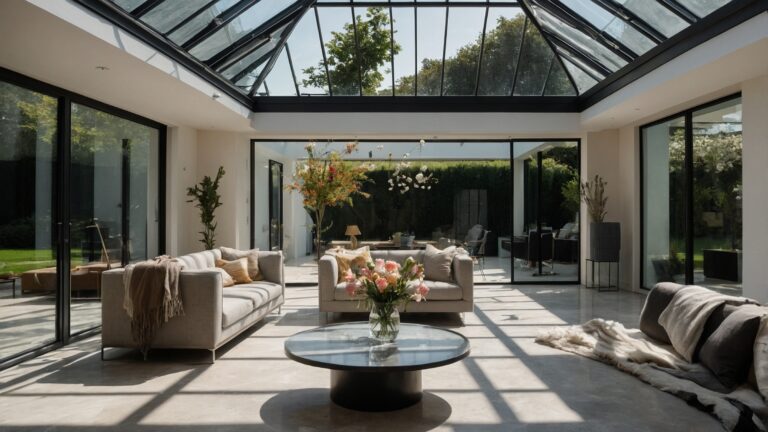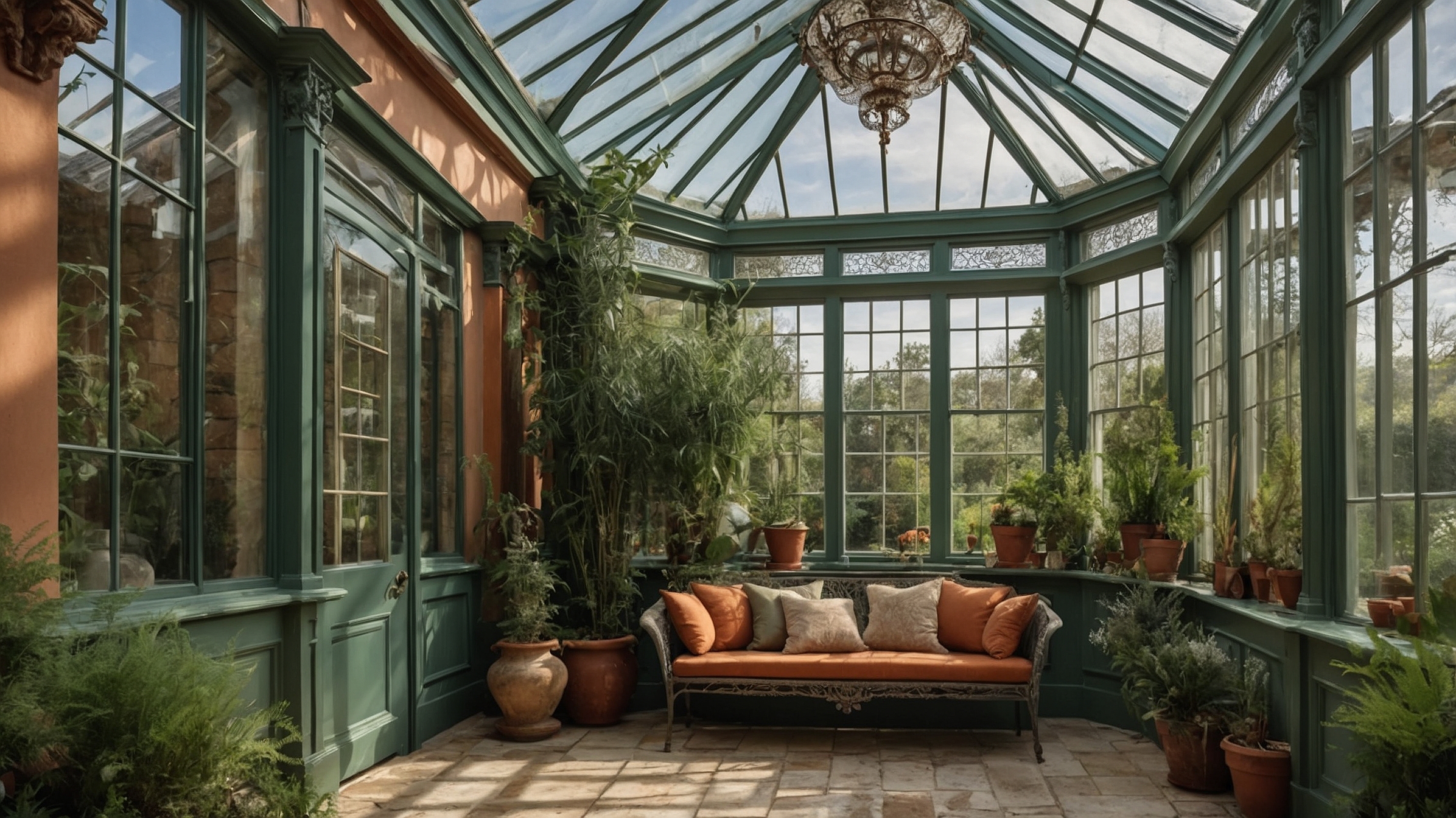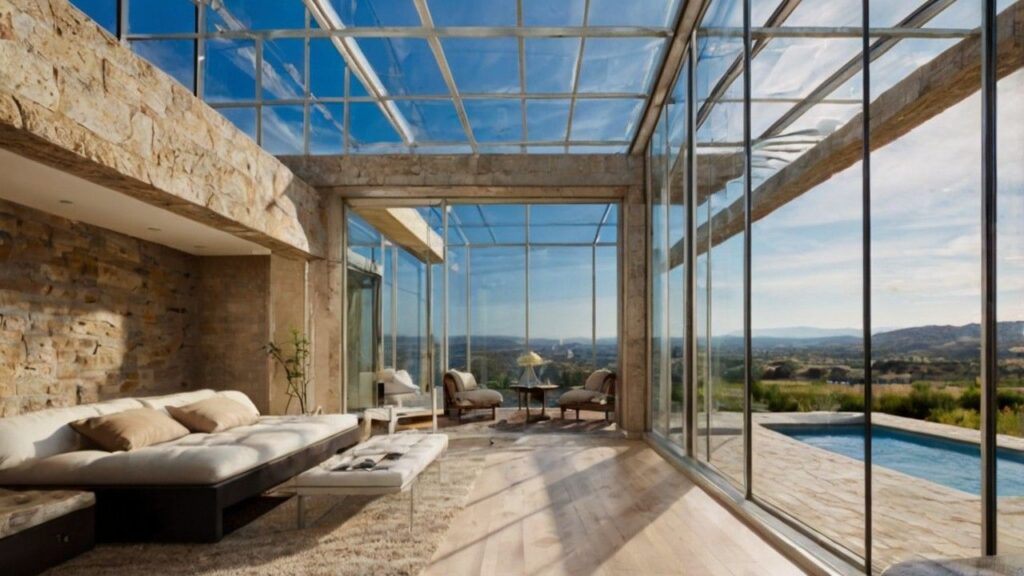Four major differences between orangeries and conservatories
Orangery vs conservatory, they both add value to your property, create a versatile living space, or simply bring more light into your home. This guide will help you understand the nuances and major differences between orangeries and conservatories. So, let’s pull back the curtains and shed some light on these glass-centric structures that have captured the hearts of British homeowners.
Orangeries and conservatories differ significantly in their design, construction, cost, and functionality. While conservatories offer an affordable way to create a light-filled space with a strong connection to your garden, orangeries provide a more versatile, year-round living area that seamlessly integrates with your home.
1. Architectural Design and Structure
The first major difference between orangeries vs conservatories lies in their architectural design and structure. This distinction is rooted in history and has evolved over time to meet modern needs.
Orangeries: Originally designed in the 17th century to house citrus trees
Feature more substantial brick or stone bases
Typically have a flat perimeter roof with a central glass lantern
Blend seamlessly with the existing architecture of the house
Often described as a cross between a traditional extension and a conservatory
Conservatories: Developed in the 19th century as glass houses for plants and social gatherings
Predominantly made of glass, including walls and roof
Usually have a pitched roof for better rain runoff
Stand out as a distinct addition to the house
Offer a more garden-like feel with panoramic views
The structural differences between orangeries and conservatories significantly impact their appearance and how they integrate with your home. An orangery often looks like a natural extension of your house, while a conservatory creates a clear transition between indoor and outdoor spaces.
2. Materials and Construction
The second major difference lies in the materials used and the construction process, which affects not only the aesthetics but also the functionality and maintenance of these structures.
Orangeries: Utilize a higher proportion of brick or stone in the construction
Feature solid pillars or columns, often with decorative elements
Incorporate less glass, typically 50-75% of the roof and walls
Use more substantial frames, often made of hardwood or aluminium
Require more extensive foundations due to the heavier structure
Conservatories: Primarily constructed with glass, often making up 75-80% of the structure
Use lighter frames, typically uPVC, aluminium, or sometimes wood
Require less substantial foundations due to their lighter weight
Often feature polycarbonate or glass roofing options
More susceptible to temperature fluctuations due to the high glass content
The choice of materials affects not only the appearance but also the thermal efficiency and durability of the structure. Orangeries, with their more substantial construction, often provide better insulation and can be used comfortably year-round. Conservatories, while offering unparalleled views, may require additional heating in winter and cooling in summer to maintain comfort.
3. Cost Implications
When it comes to budget considerations, there’s a noticeable difference between orangeries and conservatories, which is our third major point of distinction.
Orangeries: Generally more expensive due to more complex construction
Typical cost range: £20,000 to £70,000+
Higher material costs (brick, stone, hardwood)
Require more labour and time to construct
Often seen as a long-term investment that adds significant value to the property
Conservatories: Usually more affordable, especially uPVC options
Typical cost range: £10,000 to £40,000+
Lower material costs, especially for standard designs
Quicker to install, reducing labour costs
Can still add value, but generally less than an orangery
It’s important to note that these are general conservatory price ranges, and the final cost can vary significantly based on size, materials, design complexity, and location within the UK. While conservatories are typically the more budget-friendly option, orangeries are often viewed as a premium addition that can yield a higher return on investment when it comes to property value.
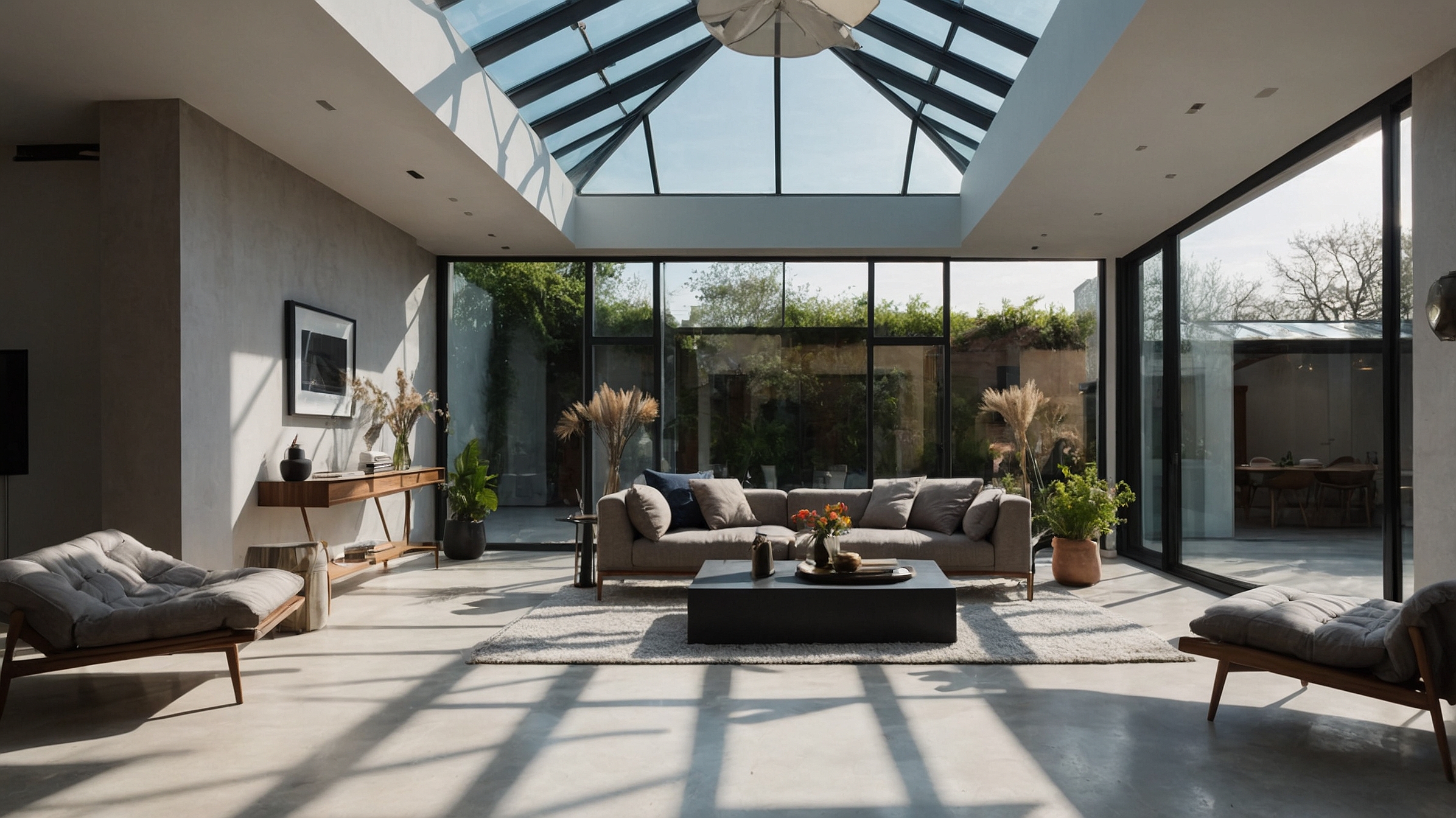
4. Lifestyle Enhancement and Functionality
The fourth major difference between orangeries and conservatories lies in how they enhance your lifestyle and their overall functionality within your home.
Orangeries: Offer a versatile space that feels like a true extension of your home
Provide better temperature control, making them usable year-round
Often used as dining rooms, home offices, or living areas
Blend indoor and outdoor living while maintaining privacy
Can be easily incorporated into open-plan living designs
Conservatories: Create a strong connection with the garden and outdoor spaces
Ideal for plant enthusiasts and those who enjoy panoramic views
Often used as sunrooms, reading nooks, or casual seating areas
Provide a distinct space separate from the main house
Excellent for maximising natural light in the home
The choice between an orangery and a conservatory can significantly impact how you use the space and how it integrates with your daily life. Orangeries tend to offer more versatility and can be used as primary living spaces, while conservatories excel at creating a garden-like atmosphere within your home.
Popularity in the United Kingdom
In recent years, orangeries have been gaining popularity in the UK, often seen as a more sophisticated and versatile alternative to traditional conservatories. This trend can be attributed to several factors:
Aesthetic appeal: Orangeries blend more seamlessly with existing architecture, appealing to homeowners who want a cohesive look.
Year-round usability: The better insulation and temperature control of orangeries make them more practical for the UK’s variable climate.
Increased property value: Orangeries are often perceived as adding more value to a property compared to conservatories.
Planning permission: In some cases, orangeries may be easier to get approval for under permitted development rights.
Energy efficiency: The solid roof and walls of orangeries often provide better energy efficiency, aligning with growing environmental concerns.
However, conservatories remain a popular choice, particularly for those seeking a more budget-friendly option or wanting to maximize their connection with the outdoors. The choice of conservatory style often comes down to personal preference, budget, and specific property requirements.
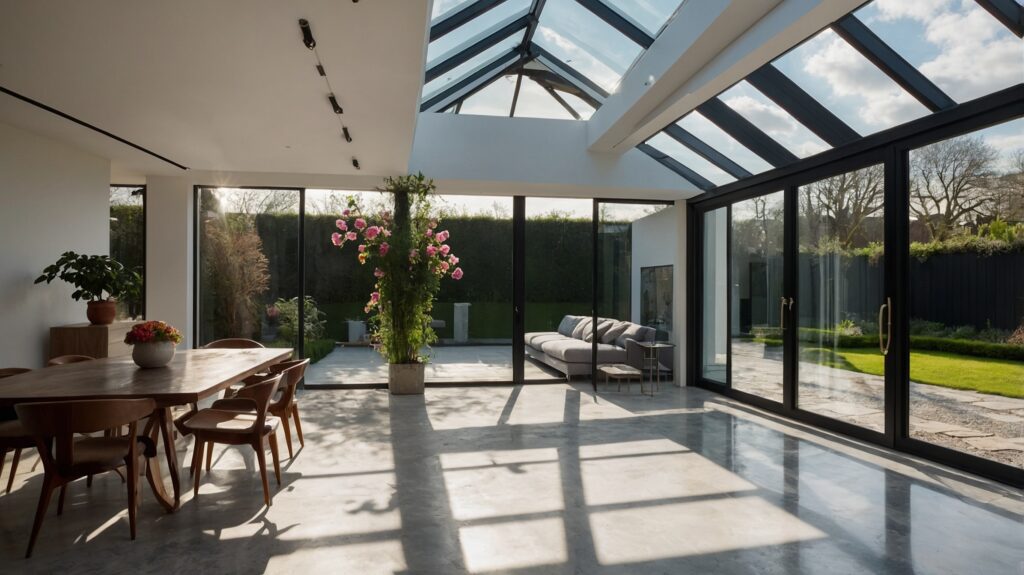
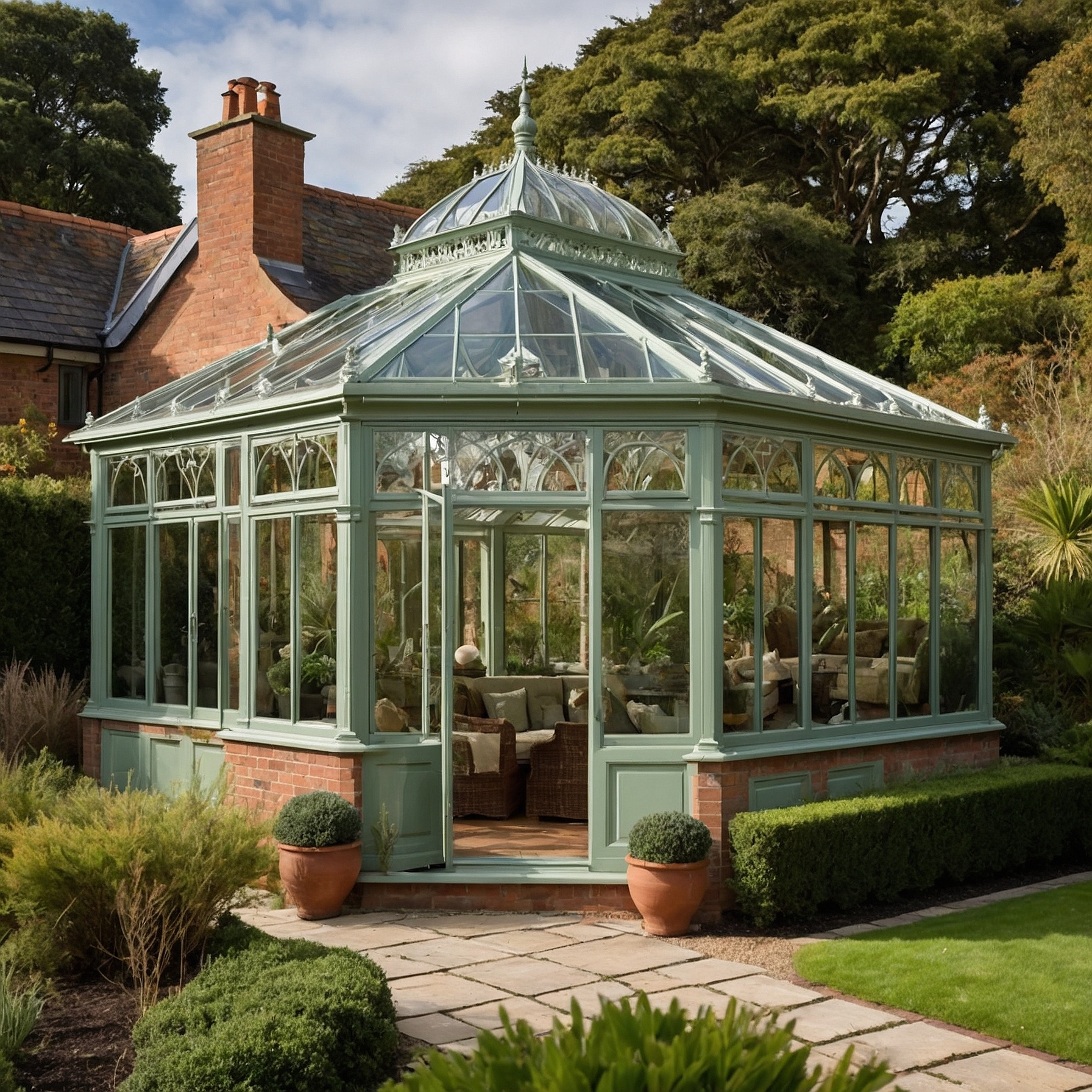
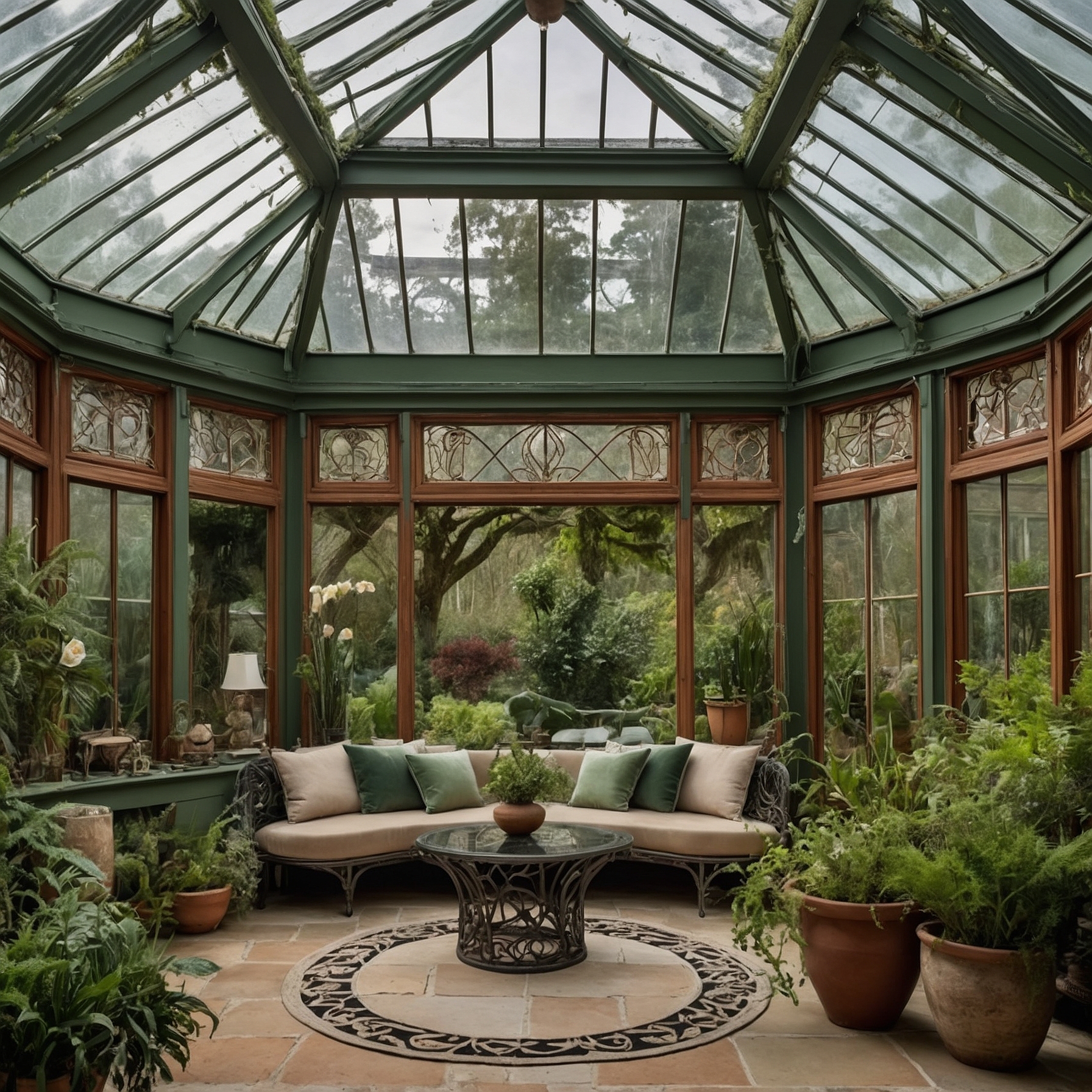
Choosing between an Orangery and a Conservatory: Tips and Tricks
Embrace the light, space, and versatility that a modern conservatory offers, and transform your UK home into a haven of style, comfort, and innovation. Your perfect indoor-outdoor retreat awaits, ready to elevate your daily life and create lasting memories for years to come. Here are some tips and tricks to help you do that:
- Assess your budget: Determine how much you’re willing to invest, keeping in mind that orangeries typically cost more but may add more value to your home.
- Consider your space usage: Think about how you plan to use the new area. If you need a versatile, year-round living space, an orangery might be more suitable. For a dedicated plant room or sunroom, a conservatory could be ideal.
- Evaluate your property’s style: Look at your home’s architecture and choose an option that complements it. Orangeries often blend better with traditional homes, while conservatories can suit both modern and traditional styles.
- Think about climate control: If you live in an area with extreme temperatures, an orangery’s better insulation might be more practical.
- Check planning permissions: Consult with your local authority about any restrictions or requirements for both options.
- Consider long-term value: While conservatories are cheaper initially, orangeries might offer better long-term value and return on investment.
- Assess your privacy needs: If you prefer more privacy, an orangery’s solid walls might be more suitable than a conservatories’ glass structure.
- Evaluate natural light requirements: If maximizing natural light is a priority, a conservatory might be the better choice.
- Consider maintenance: Think about the upkeep required for each option. Glass conservatories might need more frequent cleaning, while orangeries could require less maintenance.
- Seek professional advice: Consult with architects or home improvement specialists who can provide tailored advice based on your specific property and needs.
Whichever option you choose, both orangeries and conservatories have the potential to transform your home, bringing in light, space, and a touch of nature. By understanding the key differences between these two popular home extensions, you’re now better equipped to make an informed decision that will enhance your lifestyle and add value to your UK home.
Transforming your home with a modern conservatory is more than just an aesthetic upgrade—it’s an investment in your lifestyle and your property’s future. These ten stunning ideas offer a range of possibilities to suit various tastes, needs, and budgets. Whether you opt for a minimalist glass box, a multi-functional indoor-outdoor kitchen, or a tech-integrated smart space, a well-designed conservatory can dramatically enhance your living experience and increase your home’s value.
Which is more energy-efficient, an orangery or a conservatory?
Generally, orangeries are more energy-efficient due to their solid roof and walls, which provide better insulation. However, modern conservatories with high-quality glass and proper ventilation can also be energy-efficient.
Do I need planning permission for an orangery or conservatory?
In many cases, both orangeries and conservatories fall under permitted development rights in the UK. However, there are size and location restrictions. It’s always best to check with your local council – planning authority before proceeding.
orangery Vs conservatory Can I Use Them all year round?
Orangeries are typically better suited for year-round use due to their better insulation. Traditional conservatories may be too hot in summer and too cold in winter, but modern designs with temperature control features can also be used throughout the year.
Which adds more value to my property, an orangery or a conservatory?
Generally, orangeries are considered to add more value to a property as they are often seen as a more permanent and integrated extension of the home. However, a well-designed conservatory can also increase property value.
Can I convert my existing conservatory into an orangery?
Yes, it’s possible to convert a conservatory into an orangery. This usually involves replacing some of the glass with solid walls and adding a perimeter roof with a central lantern. However, the feasibility and cost will depend on your existing structure and foundations.
UK-Based Support Team
Our knowledgeable, UK-based support team is familiar with local markets, regulations, and trends, so you’ll always get relevant and current advice.
Simply Fill in Your Details, and Receive Competitive Quotes from Accredited Companies Tailored to Your Project!
Our team brings almost two decades of expertise in the UK home improvements sector, giving you unique insights into its challenges and possibilities. Reaching out to us means tapping into a wealth of experience from home improvements experts who know the British market inside out.
All our suppliers are members of one or more consumer protection groups below.

We offer unparalleled market insights, a network of skilled professionals vetted, accredited and reference – credit checked who can handle projects of all sizes. Our knowledgeable UK-based team will ensure a smooth, informed experience from start to finish.
To send us your marketing and other service offers, please use the following email: offers@comparison.market


